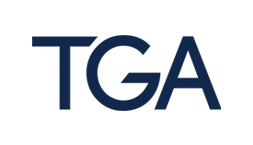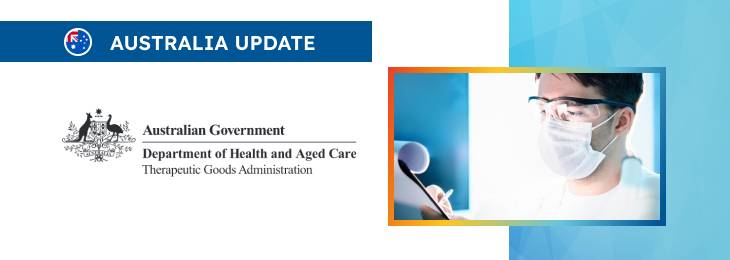The new article describes in detail the applicable types and classes of recalls and also explains the difference between recalls and non-recall actions from a regulatory standpoint.

Table of content
The Therapeutic Goods Administration (TGA), an Australian regulating authority in healthcare products, has published a guidance document dedicated to Uniform Recall Procedures for Therapeutic Goods (URPTG).
The document describes in detail the relevant procedures and also provides additional clarifications and recommendations the parties involved should follow to ensure compliance with the existing legal framework.
The authority also reserves the right to change the guidance and provision thereof, should such changes be reasonably necessary to reflect corresponding amendments to the underlying legislation.
Deciding whether to undertake a recall or non-recall action for therapeutic goods is critical in ensuring product safety and regulatory compliance.
This decision-making process involves evaluating the type, class, and level of potential recall actions against the severity of the risk posed by the product. Additionally, it encompasses considering non-recall actions when products meet specifications but still pose specific risks under certain conditions.
The guidelines outlined in the document offer sponsors a structured approach to categorize and manage actions effectively, aiming to minimize health risks while adhering to Australian regulatory requirements.
Recall and Non-Recall Actions Overview
According to the guidance, sponsors must determine the appropriate course of action – whether to initiate a recall or opt for a non-recall action – based on a thorough risk analysis and the product’s compliance with safety and quality standards.
The authority additionally emphasizes that an agreement on the type, class, and level of recall action with the regulatory body is essential before proceeding.
This decision is influenced by specific guidance on market notifications, including considerations for Medical Device Cybersecurity.

Types of Recall Actions
As further explained by the TGA, recall actions vary depending on the deficiency’s nature and the potential health risk. They include:
- Recall: Removing products from the market due to safety, quality, efficacy, performance, or presentation deficiencies.
This includes removing products with inherent design or manufacturing defects and requesting the return of defective products from customers. - Product Defect Correction: Correcting a specific or potential deficiency while allowing the product’s continued use under robust mitigation until a permanent correction is implemented.
It involves repair, modification, adjustment, or re-labeling of therapeutic goods. - Hazard Alert: Hazard alerts provide precautionary information to health professionals about potential complications and management advice for implanted medical devices and biologicals that cannot be recalled.
- Product Defect Alert: Raises awareness of safety, quality, efficacy, or performance concerns, particularly when discontinuation poses greater risks than continued use. It describes actions to mitigate risks and may precede a recall.
Classes of Recalls
The document further describes in detail the different classes of recalls, emphasizing the specific characteristics each of them has. In particular, recalls are categorized into three classes based on the seriousness of the problem and the degree of risk:
- Class I: Represents the most safety-related severe issues that could lead to serious adverse health consequences.
- Class II: Involves situations where adverse health consequences are temporary or medically reversible, or the probability of serious adverse effects is remote.
- Class III: Denotes the lowest risk, where the use of or exposure to a deficient product is unlikely to cause adverse health consequences.
Levels of Recalls
Apart from the above mentioned points, the document provides additional clarifications regarding the levels of recalls. The level of recall action defines the extent of notification and involves:
- Wholesale Level: Targets medicine and medical device wholesalers and state and territory purchasing authorities.
- Hospital Level: Extends to hospitals, nursing homes, healthcare institutions, pharmacies, and other specific healthcare services.
- Retail Level: Includes retail pharmacists, dentists, health care professionals, and all other retail outlets.
- Consumer Level: Encompasses all the above levels plus a direct notification to patients and other consumers.
Non-Recall Actions
It is also important to mention that the applicable legislation introduces the concept of non-recall actions since not all issues necessitate a recall. Non-recall actions include:
- Safety Alert: Issued to highlight specific precautions for the safe use of therapeutic goods that meet all specifications and indications but may pose risks if not used as directed.
- Product Notification: Provides information about a therapeutic good unlikely to result in significant adverse health consequences.
- Quarantine: Suspends further supply and distribution pending an investigation into identified defects potentially affecting safety, efficacy, or performance.
- Product Withdrawal: For withdrawing products unrelated to safety, quality, efficacy, performance, or presentation issues, like introducing a new model.
Conclusion
The present TGA guidance provides an in-depth overview of the various recalls-related matters.
The document explains the most critical regulatory concepts. Also, it highlights the key points to be considered by the parties conducting recalls and non-recall actions to ensure compliance with the existing legal framework.
How Can RegDesk Help?
RegDesk is a holistic Regulatory Information Management System that provides medical device and pharma companies with regulatory intelligence for over 120 markets worldwide. It can help you prepare and publish global applications, manage standards, run change assessments, and obtain real-time alerts on regulatory changes through a centralized platform. Our clients also have access to our network of over 4000 compliance experts worldwide to obtain verification on critical questions. Global expansion has never been this simple.

